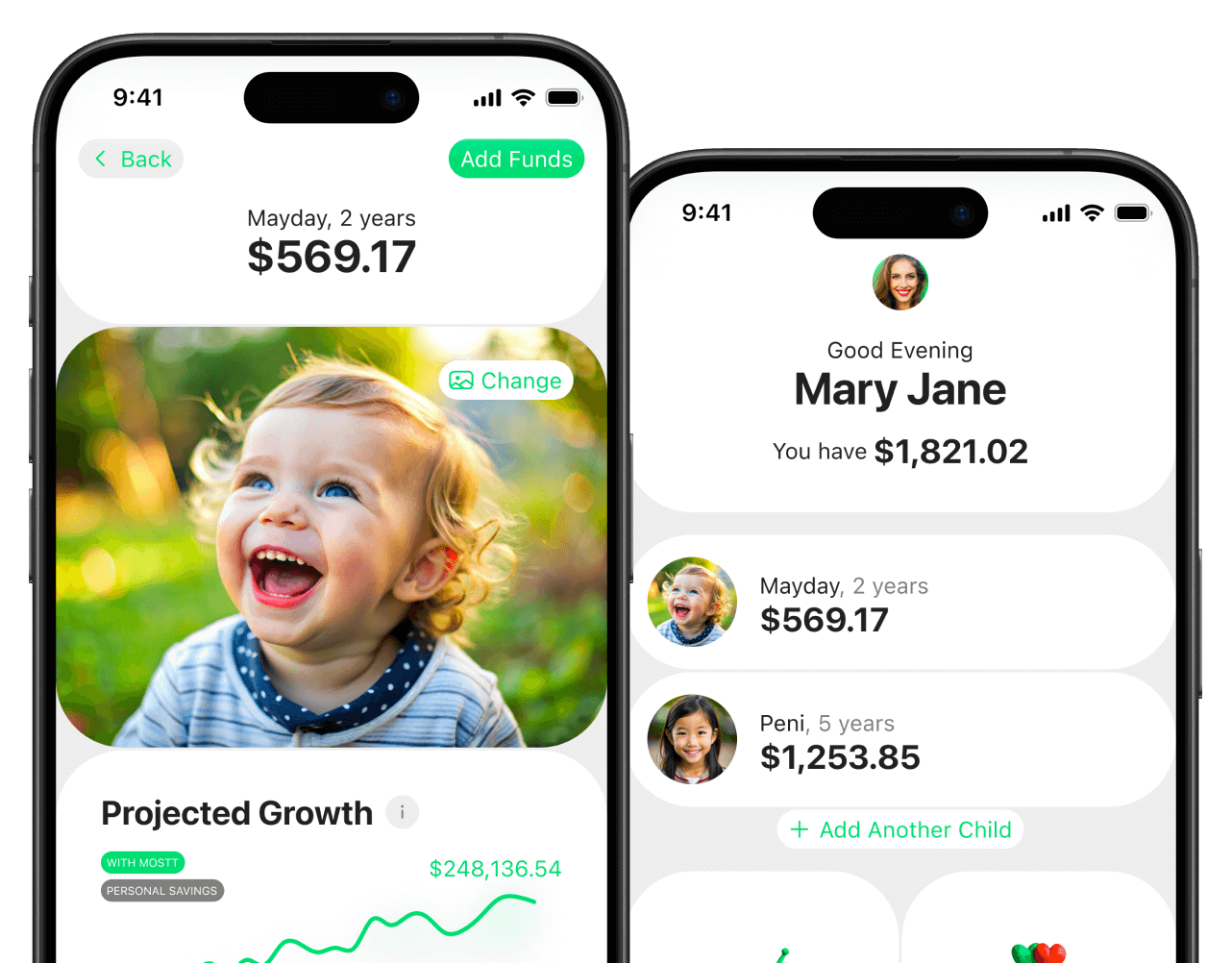As a parent, your life is an intricate tapestry woven with endless responsibilities and selfless acts. The morning rush, the evening homework help, the carefully planned family outings, these are the visible triumphs of your daily life. Yet, beneath this demanding, rewarding routine often lies a profound, unseen challenge: debt.
This financial obligation, whether accumulated through credit card usage, unexpected medical emergencies, or student loan balances, acts as a silent source of stress. It is the elephant in the living room, often unacknowledged in the pursuit of maintaining a stable, happy family facade. The burden of financial obligations can be truly overwhelming, clouding your long-term planning and stealing precious peace of mind. You are not just struggling with numbers, you are struggling with the worry of providing, the fear of the unknown, and the pressure of a future that feels constrained.
It is crucial to understand this truth: you are not alone, and this debt does not define your story. Millions of parents across the country find themselves in similar, challenging financial situations. But here is where your journey as the financial hero begins. With the right knowledge, a clear-headed strategy, and a determination to regain control, you possess the power to navigate this challenge, shed the overwhelming financial weight, and pave a clear path to lasting financial freedom. The first step is acknowledging the battle and deciding to fight it.
The Conflict: Two Paths, One Goal – Getting Better Terms
Once you commit to tackling your debt, you are immediately confronted with a core strategic choice. The primary goal is singular: to resolve the outstanding debt on the most favorable terms possible. This resolution typically channels into two fundamentally different approaches, each with its own methodology, risk profile, and potential impact on your financial future.
The two primary paths that emerge are:
-
Debt Settlement: A negotiated agreement with your creditor to accept a lump-sum payment that is less than the total amount you originally owed. This is a high-impact, potentially faster route, often reserved for scenarios of genuine, long-term financial hardship.
-
Repayment Plan (or Debt Management Plan): An agreement to follow a structured payment schedule that ensures you pay off the full debt amount over an agreed-upon, extended period (often with modified terms, such as a reduced interest rate or lower monthly payment). This is a more measured, credit-preserving approach, suited for those with steady income who are struggling with high interest rates or unmanageable current payment terms.
The distinction between these two options is critical. One focuses on reducing the total principal owed (settlement); the other focuses on making the full repayment manageable over time (repayment plan). Your right choice will not be universal; it depends entirely on a thoughtful assessment of your current income stability, the total amount of debt, your essential expenses, and, critically, your long-term credit and tax goals. A deeper understanding of the nuances of each option is the key to choosing the path that aligns with your unique family circumstances and financial vision.
Path A: Debt Settlement
What Is It?
Debt settlement is a negotiation strategy where a debtor, often with the help of a professional debt settlement company or attorney, attempts to persuade a creditor to accept a one-time payment that is significantly less than the full outstanding balance. Creditors may be open to this for several reasons: they would rather recoup a partial amount than nothing at all, especially if they believe the debtor is on the verge of bankruptcy. This approach is most commonly utilized for unsecured debts, such as credit card balances, personal loans, and some medical bills, and is typically employed when the debtor has reached a point of significant and sustained financial hardship (meaning they cannot realistically keep up with even minimum payments).
The Upside: High-Reward Potential
-
Substantial Potential Savings: The most compelling benefit is the possibility of reducing the total principal owed by a significant percentage, sometimes by 40-60%. This immediate reduction in the amount due offers a powerful psychological and financial lift.
-
Faster Resolution to Debt: Unlike a multi-year repayment plan, once a settlement is agreed upon and the lump sum is paid, the debt is resolved. This can lead to a quicker exit from a specific debt cycle and allows for a faster refocus on saving and future financial goals.
-
Immediate Emotional Relief: The stress of large, accumulating debt can be paralyzing. Eliminating a major financial obligation through settlement can provide a profound and immediate boost to mental health, reducing the stress and anxiety that impacts the entire family unit.
The Risks and Downsides: Significant Trade-offs
-
Severe Credit Impact: Settling a debt will almost certainly be reported to credit bureaus as “Settled for Less Than Owed” or “Partial Payment.” This notation is a significant derogatory mark that can severely damage your credit score for up to seven years [Source: Equifax/Experian/TransUnion FAQ on Credit Reporting], making it more difficult and expensive to secure future loans, mortgages, or even certain jobs or insurance policies.
-
Tax Implications (The “Phantom Income” Trap): The amount of debt that a creditor forgives ($600 or more) may be considered taxable income by the IRS (unless you are “insolvent,” meaning your liabilities exceed your assets). This is known as Cancellation of Debt (COD) income [Source: IRS Publication 4681 on Canceled Debts], which means that while you save on the debt, you may face an unexpected tax bill at the end of the year. It is imperative to consult a tax professional.
-
Creditor Reluctance and Aggression: Creditors are not obligated to settle. While waiting for enough money to settle, you may intentionally or unintentionally fall further behind on payments, potentially leading the creditor to intensify collections efforts, hire aggressive collection agencies, or even pursue legal action, such as a lawsuit or wage garnishment (which is a significant risk of this path).
Path B: Repayment Plan
What Is It?
A repayment plan, often facilitated through a non-profit Credit Counseling Agency (CCA) as a Debt Management Plan (DMP), is a structured agreement designed to make the full repayment of debt manageable. The CCA negotiates with your creditors to obtain better terms, such as a significantly reduced interest rate (often from 25% down to single digits) and a lower, fixed monthly payment that incorporates all your enrolled debts. The CCA then manages the payments, receiving one lump sum from you monthly and distributing it to all your creditors. This process is about restructuring the payment over time to avoid the interest-rate spiral, not about reducing the principal amount owed.
The Upside: A Credit-Conscious Approach
-
Credit Preservation and Improvement: By adhering faithfully to the structured payment terms of a DMP, you demonstrate consistent, responsible debt repayment. While enrollment might be noted on your credit report, the long-term impact is often positive, as it signals stability and commitment, leading to a steady improvement in your credit score as debts are paid down.
-
Predictable, Structured Payments: The plan consolidates multiple, variable minimum payments into a single, fixed, manageable monthly payment. This simplifies budgeting significantly, eliminates the uncertainty of varying interest and due dates, and is often designed to have you debt-free in a reasonable timeframe, typically 3 to 5 years.
-
Protection Against Legal Actions: A formal agreement with a CCA often prompts creditors to halt or significantly reduce collection calls and is a clear sign that you are actively working to resolve the debt, which can discourage them from pursuing expensive and time-consuming legal actions like lawsuits or wage garnishments.
-
Financial Education and Support: Working with a non-profit CCA provides access to certified credit counselors who offer essential financial education, budgeting tools, and support, helping you address the root causes of your debt for lasting financial health.
The Risks and Downsides: The Long Game
-
Longer Commitment Required: This path is a marathon, not a sprint. It can take three to five years to pay off all the enrolled debt fully, demanding sustained discipline and commitment over a significant period. The immediate gratification of debt relief is delayed.
-
Interest Accumulation (Despite Lower Rates): Although the interest rates are typically much lower than your original credit card rates, interest will still continue to accrue on the full principal amount throughout the repayment period, resulting in a higher total amount paid back compared to a successful settlement.
-
Discipline and Consequence: A repayment plan demands unwavering discipline. Missing payments to the CCA can result in your dismissal from the plan, leading creditors to revert to the original, high-interest terms and potentially restarting aggressive collection efforts. Furthermore, during the plan, you are usually required to stop using all enrolled credit accounts, which requires a shift in spending habits.
Choosing the Right Path for Your Story
The decision between Debt Settlement and a Repayment Plan is a deeply personal one that acts as the fulcrum of your financial recovery. It requires an honest, objective self-assessment based on three critical factors:
-
Your Financial Situation (The “Can I Pay” Assessment):
-
Repayment Plan: Suitable if you have a steady, reliable income but are overwhelmed by high interest rates. You can afford to pay the full principal, but you need better terms to make the payments manageable.
-
Debt Settlement: Necessary if you are facing a long-term or permanent financial hardship (e.g., job loss, disability, major business failure). You genuinely cannot afford to pay the full principal amount.
-
-
Your Credit Goals (The “Future Borrowing” Assessment):
-
Repayment Plan: Prioritizes maintaining or improving your credit score, essential if you plan to buy a home, refinance, or take out another major loan in the next 5-7 years.
-
Debt Settlement: Accepts significant short-term credit damage as a trade-off for immediate, principal reduction.
-
-
Your Emotional Readiness and Discipline (The “Commitment” Assessment):
-
Repayment Plan: Requires the sustained commitment to a multi-year budget and plan.
-
Debt Settlement: Requires enduring heightened creditor pressure and collections activities while saving the lump sum.
-
A temporary setback that you expect to recover from, such as a short-term reduction in income, strongly suggests a Repayment Plan to preserve your credit. Conversely, a major, permanent shift in financial circumstances that makes full repayment impossible points toward Debt Settlement for a clean break.
The Plan: How to Negotiate With Creditors Step by Step
Regardless of the path you choose, negotiation is the key skill. Approaching creditors with a structured, professional plan significantly increases your chance of securing favorable terms.
Step 1: Get Your Numbers Clear (The Preparation Phase)
-
List and Prioritize Your Debts: Create a master document detailing every unsecured debt: the creditor’s name, the account number, the exact amount owed, the current interest rate, and a note on the last payment date.
-
Assess Your True Affordability: Develop a realistic family budget. Determine your absolute minimum required expenses (housing, food, utilities) and calculate your true disposable income. This number dictates how much you can afford for a monthly payment (Repayment Plan) or how quickly you can save for a lump sum (Settlement).
-
Understand Your Rights: Familiarize yourself with the Fair Debt Collection Practices Act (FDCPA) [Source: Consumer Financial Protection Bureau on FDCPA] (FDCPA). Knowing what collectors can and cannot do empowers you and prevents emotional decision-making under duress.
Step 2: Initiate Contact (The Proactive Engagement Phase)
-
Reach Out Promptly: The moment you anticipate difficulty, contact your creditors. Being proactive shows good faith. Do not wait until the account is severely delinquent.
-
Be Honest and Professional: Clearly and calmly explain your current financial hardship (e.g., “I’ve had a 30% reduction in income due to a job change”). Express your sincere desire to resolve the debt, but be firm about what you can realistically afford.
-
Choose the Right Medium: While phone calls are good for initial discussion, always follow up in writing (certified mail is best) to document your communication and offers. For the formal offer (Step 3), written communication is non-negotiable.
Step 3: Make a Reasonable Offer (The Proposal Phase)
-
For Debt Settlement: Start your offer low (e.g., 20-30% of the total balance), anticipating the creditor will counter. The final settlement often lands around 40-60%. Crucially, emphasize that this is a lump-sum payment you are prepared to make immediately upon agreement.
-
For a Repayment Plan (DIY): Suggest a revised monthly payment amount that is sustainable for your budget, coupled with a specific, feasible timeline (e.g., “I can pay $150 per month for the next 48 months to clear the balance”).
Step 4: Get Everything in Writing (The Legal Safeguard Phase)
NEVER send a payment before you have a signed agreement in hand.
-
Document Agreements: Demand written confirmation on the creditor’s official letterhead, detailing: the exact settlement or final payment amount, the specific date the payment is due, the payment method, and a clear statement that the account will be considered “Paid in Full” or “Settled in Full” upon successful payment.
-
Review Carefully: Double-check that the agreement waives all future interest, fees, and collection activities. Ensure the reporting to the credit bureaus is explicitly stated (even if it’s “settled for less,” having it explicitly stated is important).
Step 5: Follow Through (The Execution Phase)
-
Make Payments Promptly: Adhere to the terms exactly. If it’s a lump sum, ensure the funds are cleared by the agreed-upon date. For a repayment plan, never miss a payment.
-
Maintain Records: Keep copies of the final written agreement, all checks, money orders, or bank confirmations of payments, and all correspondence for at least seven years.
-
Monitor Your Credit: Within 30-90 days of resolving the debt, check your credit report [Source: Annual Credit Report Free Service] to ensure the creditor has reported the status accurately as per the written agreement. Dispute any inaccuracies immediately.
What Success Looks Like
Your successful navigation of this process is not merely the absence of a debt statement, it is a profound transformation of your life and your family’s future. Success looks like:
-
Debt-Free Living: The elimination of the debilitating monthly interest cycle, freeing up significant income that was once dedicated to principal and fees.
-
Improved Credit Standing: A credit score that has stabilized and is growing, opening doors to favorable interest rates for mortgages, vehicles, and future borrowing, representing tangible savings.
-
Financial Confidence: A clear, working understanding of budgeting, saving, and financial management that transforms anxiety into peace of mind. You shift from a defensive financial posture to an offensive one, actively building wealth.
This is the achievable reality you are working toward, built with determination and the systematic execution of a solid strategy.
Final Thoughts
As a parent, your well-being directly underpins the well-being of your family. The pervasive, chronic stress of financial instability should not be your legacy. You have taken the brave step of confronting this challenge and acquiring the knowledge needed to resolve it.
Remember, you do not have to walk this road alone.
-
Seek Professional Advice: Before choosing between a Repayment Plan and a Debt Settlement, consult with qualified, non-profit financial advisors or credit counselors, such as those accredited by the National Foundation for Credit Counseling (NFCC) (https://www.nfcc.org/ ]]. They can offer objective analysis of your situation and model the long-term impact of each path.
-
Educate Yourself Continually: Use resources from trusted governmental and non-profit entities like the Consumer Financial Protection Bureau (CFPB) [Source: CFPB Financial Tools and Resources] and your state’s Attorney General’s office to stay informed about consumer rights and financial management best practices.
-
Stay Committed to the Journey: Financial recovery is a marathon, not a sprint. Celebrate every small victory (a successful negotiation, a reduced interest rate, an extra dollar put toward principal). Stay focused on the long-term goal of stability and the brighter financial future you are creating for your children.
This chapter of debt does not define your entire family’s story. With determined action, knowledge, and discipline, you are turning the page to a new, empowering, and debt-free life.




